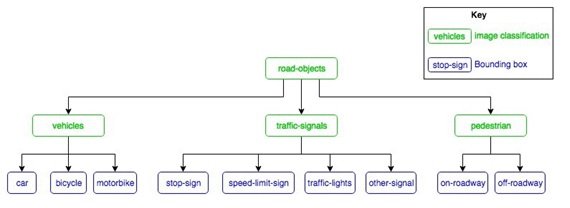Once upon a time, in the vast kingdom of Search Engine Optimization, a perplexing enigma held webmasters captive – the Keyword Conundrum. The notion of keyword density ruled over the land, dictating the fate of countless websites. But alas, as the digital realm evolved, so did the debate around its relevance. As we embark on a quest to unravel this puzzling riddle, let us cast aside biases and venture forth with open minds, seeking the truth hidden amidst the tangled web of keywords. Gather ’round, dear readers, for a journey through the enchanting realms of SEO mythology, where the ins and outs of keyword density shall be unveiled, and its mysterious significance laid bare.
Table of Contents
- Understanding the Keyword Conundrum: Debunking the Myth of Keyword Density
- Analyzing the Evolution of Keyword Relevance: Navigating Search Engine Algorithms
- Unlocking the Secrets of Effective Keyword Placement: Strategies for Optimizing Content
- Embracing Semantic Search: Balancing Keywords and Context for Better SEO
- Q&A
- In Summary

Understanding the Keyword Conundrum: Debunking the Myth of Keyword Density
The Importance of Keyword Density in SEO
When it comes to optimizing your website for search engines, you may have heard all about the mysterious keyword density. However, there’s a common misconception surrounding this metric that needs to be debunked. Let’s unravel the keyword conundrum and shed some light on the relevance of keyword density in the world of SEO.
1. Understanding Keyword Density: Keyword density refers to the percentage of times a target keyword appears on a web page in relation to the total number of words. While it was once considered a crucial factor in determining search engine rankings, the emphasis has shifted in recent years. Today, search engines focus more on providing valuable and relevant content to users, rather than on exact keyword match percentages. This means that overstuffing your content with keywords can actually harm your website’s rankings.
2. User Experience Matters: Instead of obsessing over keyword density, your primary focus should be on creating high-quality, user-friendly content. Search engines now employ advanced algorithms that can detect the relevance and naturalness of a page’s content. By writing for your audience and providing informative, engaging, and easy-to-read content, you’re more likely to impress both the search engines and your visitors.

Analyzing the Evolution of Keyword Relevance: Navigating Search Engine Algorithms
In the ever-changing landscape of search engine algorithms, understanding the evolution of keyword relevance is crucial for anyone looking to navigate the digital realm. With the rise of sophisticated search engines like Google, keyword density has become a topic of intrigue and discussion among beginners and experts alike. So, let’s unravel the keyword conundrum and explore why keyword density is still relevant in today’s SEO practices.
1. Quality over Quantity: Gone are the days when stuffing your content with keywords would guarantee higher search rankings. Search engines have become smarter and now prioritize quality over quantity. It’s not about cramming as many keywords as possible but incorporating them strategically and naturally into your content.
2. Find the Right Balance: Keyword density refers to the percentage of keywords present in your content compared to the total word count. While no exact density percentage is universally recommended, striking a balance is key. Including keywords at regular intervals throughout your content helps search engines understand the relevance of your page without over-optimization.
3. User Experience Matters: Search engines like Google heavily prioritize user experience. They aim to deliver the most relevant and valuable content to users. So, choose keywords that align with your audience’s intent and craft content that genuinely addresses their needs. User-friendly, informative, and engaging content will outperform content that solely focuses on keyword stuffing.
Unlocking the Secrets of Effective Keyword Placement: Strategies for Optimizing Content
Welcome to the fascinating world of keyword placement and the role it plays in optimizing your content! When it comes to attracting search engine attention and driving organic traffic to your website, understanding the art of strategic keyword placement is essential. By unraveling the relevance of keyword density, we can delve into the intricate strategies that will help your content soar to new heights.
1. The Power of Balance: Placing keywords throughout your content shouldn’t feel forced or unnatural. Strike a balance by strategically incorporating keywords in your titles, headings, meta tags, and within your body content. This will signal search engines that your content is relevant without overstuffing it with keywords.
2. Context is Key: Gone are the days of mindlessly sprinkling keywords throughout your content. Instead, focus on providing valuable and insightful information. Blend your keywords into the text seamlessly, allowing them to naturally fit within the context of your content.
3. Long-Tail Keywords: Don’t underestimate the power of long-tail keywords. These longer, more specific phrases not only attract highly targeted traffic but also have less competition. Incorporating a mix of long-tail and shorter keywords will ensure your content appeals to a broader range of search queries.

Embracing Semantic Search: Balancing Keywords and Context for Better SEO
Semantic search is a game-changer in the world of SEO, revolutionizing the way search engines understand user queries and deliver relevant results. Gone are the days when keyword stuffing could guarantee a higher ranking. With semantic search, search engines have become smarter, focusing more on context and user intent rather than just matching keywords. So, how can you navigate this new landscape and ensure your content is optimized for semantic search? Here are a few tips to help you strike the right balance between keywords and context:
1. Understand user intent: Instead of fixating on specific keywords, try to understand what the user is actually looking for. Put yourself in their shoes and think about the underlying purpose of their search. What questions are they likely to have? By addressing these questions, you can create content that not only matches their intent but also provides meaningful answers.
2. Use long-tail keywords: Long-tail keywords are more specific and targeted phrases that closely align with user search intent. Unlike generic keywords, long-tail keywords help narrow down the topic and attract a more qualified audience. For example, instead of targeting the broad keyword “shoes,” you can use long-tail keywords like “comfortable running shoes for women” or “affordable hiking shoes for beginners.” These long-tail keywords not only improve your chances of ranking higher but also increase the likelihood of attracting users who are genuinely interested in your content.
3. Optimize for related concepts: Semantic search goes beyond exact keyword matches and focuses on related concepts and entities. When creating content, think about the various terms, synonyms, and related ideas that are commonly associated with your main keyword. Including these related concepts in your content can help search engines understand the context and relevance of your article, ultimately improving your chances of ranking higher.
4. Provide comprehensive answers: Semantic search aims to provide users with the most relevant and comprehensive answers to their queries. To optimize your content for semantic search, go beyond surface-level explanations and provide in-depth, valuable information. Use headings and subheadings to structure your content, making it easy for both users and search engines to understand the key points. Additionally, include relevant images and videos to enhance the overall user experience and provide visual context.
By embracing semantic search and finding the right balance between keywords and context, you can optimize your content for better SEO results. Remember, it’s not just about stuffing your content with keywords but rather understanding user intent and delivering valuable, comprehensive answers. So, dive into the world of semantic search and unlock the true potential of your SEO strategy.
Q&A
Q: Does keyword density still play a significant role in SEO?
A: Welcome to our thought-provoking article, centering on the captivating conundrum of keyword density and its ongoing relevance in the intricate realm of search engine optimization.
Q: What exactly is keyword density?
A: Keyword density is an archaic term, once esteemed as a vital metric indicating the frequency a particular keyword appears within a given text, in relation to the total word count.
Q: Is keyword density still a reliable indicator of a webpage’s relevance?
A: While keyword density was once a cherished metric used to optimize website content, the evolving landscape of SEO has cast doubt on its current significance. Today, search engines employ far more sophisticated algorithms, focusing on user intent and context, rendering keyword density less reliable.
Q: Has Google downplayed the importance of keyword density?
A: Google, as the reigning king of search engines, has indeed downplayed the traditional significance of keyword density over time. Instead, Google encourages webmasters to prioritize high-quality content that addresses users’ needs effectively, rather than obsessing over keyword density.
Q: Can over-optimizing keyword density negatively impact a website’s ranking?
A: Indeed, the age-old practice of excessively stuffing keywords into a webpage can now have negative consequences. Search engines are increasingly adept at distinguishing between genuine relevance and keyword manipulation, penalizing websites that resort to such practices.
Q: Are keywords still essential in SEO?
A: Keywords maintain their primary role in SEO, acting as connective tissue between users’ search queries and webpage content. However, focusing solely on their density is no longer effective. The emphasis now lies on employing keywords strategically, ensuring that the content resonates with users while providing genuine value.
Q: What are some effective alternatives to keyword density?
A: In the digital age of SEO, alternative approaches have emerged, such as semantic search, which focuses on a webpage’s overall thematic relevance rather than the exact keyword count. It is essential to concentrate on crafting high-quality content that answers users’ questions, incorporates relevant synonyms, and engages visitors.
Q: How can I strike the right balance with keywords?
A: Achieving the right balance between keywords and content can be an art form. Aim to integrate keywords naturally and seamlessly within the fabric of your content, avoiding unnatural repetition or forced inclusion. Focus on creating comprehensive, informative, and engaging content that speaks directly to users’ needs, while incorporating relevant and related terms.
Q: What is the ultimate secret for achieving SEO success in this era?
A: In this ever-evolving SEO landscape, the secret to success lies in holistically catering to users’ expectations. Craft content that genuinely helps and engages, while ensuring technical intricacies like mobile-friendliness, fast loading times, and relevant internal and external linking are considered. Such practices will genuinely resonate with users and search engines alike, forging a path to SEO success.
Q: In conclusion, does keyword density still hold significant weight in SEO?
A: Keywords, once the backbone of SEO, no longer rely solely on density for their relevance. The evolution of search engine algorithms and the focus on user intent dictates that webmasters must concentrate on delivering quality content, ensuring seamless integration of keywords, and embracing a more holistic approach to SEO. Keyword density remains just one small piece of the intricate puzzle.
In Summary
As our journey through the puzzling realm of the keyword conundrum comes to a close, we have diligently explored the perplexing web of keyword density’s relevance. In our pursuit of unraveling this enigmatic concept, we have delved into the depths of its historical significance and its impact on search engine optimization.
Through the pages of this article, we have traversed the vast landscape of keyword density, raising questions and seeking answers. We have uncovered its origins, traced its evolution, and dissected its role in the intricate dance between content creators and search engines.
With a neutral lens, we have delved into the debate surrounding keyword density, carefully considering both sides of the argument. We have witnessed the passionate defenders of its significance, as well as the skeptics who claim the algorithmic tides have turned against its once unquestioned importance.
Yet, as the curtain gradually falls on our exploration, one thing remains abundantly clear – the relevance of keyword density is no longer as straightforward as it once appeared. The ever-evolving nature of search engine algorithms and user intent continues to reshape the SEO landscape, rendering conventional techniques less rigid and more adaptable.
It is here, in this swirling sea of SEO possibilities, that we find ourselves confronted with a new reality. A reality where quality content reigns supreme, tailored to satisfy the intricate nuances of human curiosity and search engine algorithms alike.
In this final chapter of our keyword odyssey, we invite you, dear reader, to embrace a more nuanced approach. To navigate the seas of search intent with grace, sprinkling your content with relevance and depth rather than emphasizing an arbitrary density metric.
As we wave goodbye to the traditional keyword density model, let us welcome in an era of comprehensive content that holistically caters to the needs of both searcher and search engine. Let us embrace the enigma, for in the ever-evolving landscape of SEO, the only constant is change.

